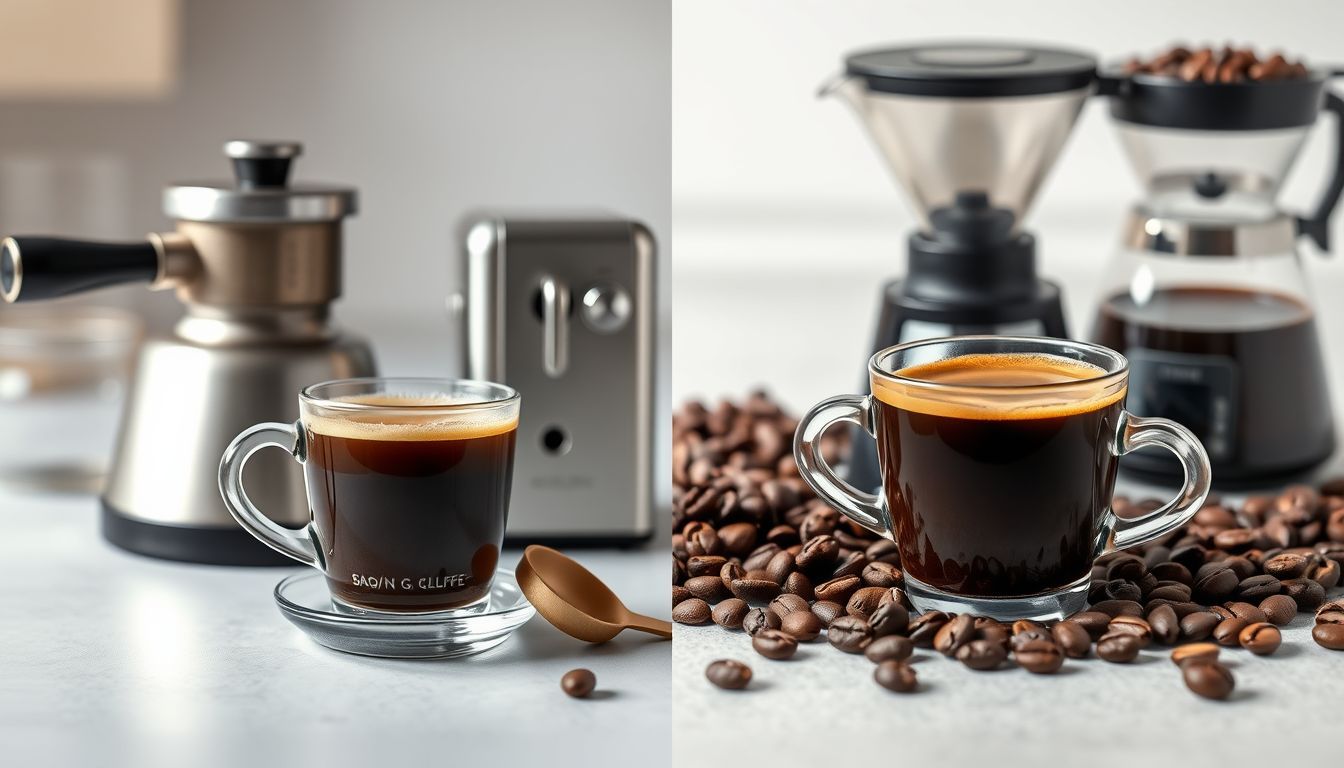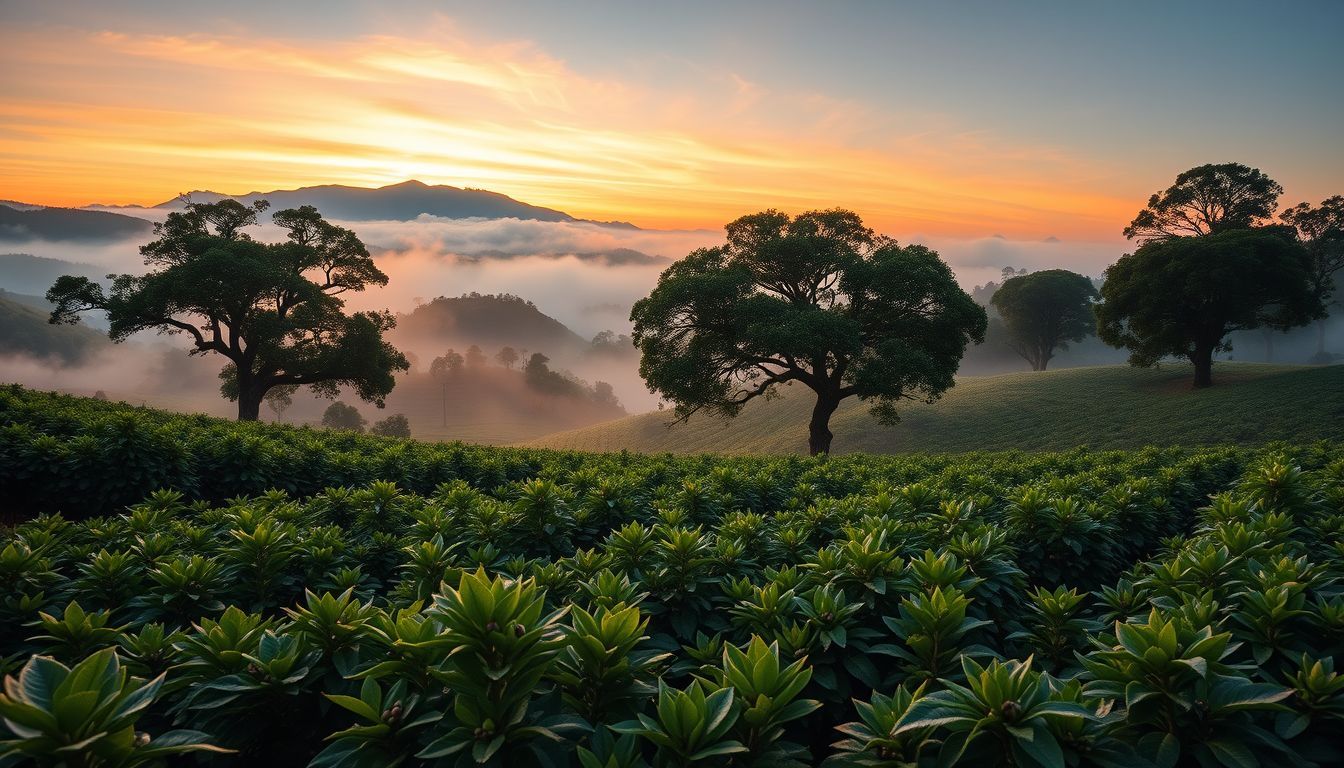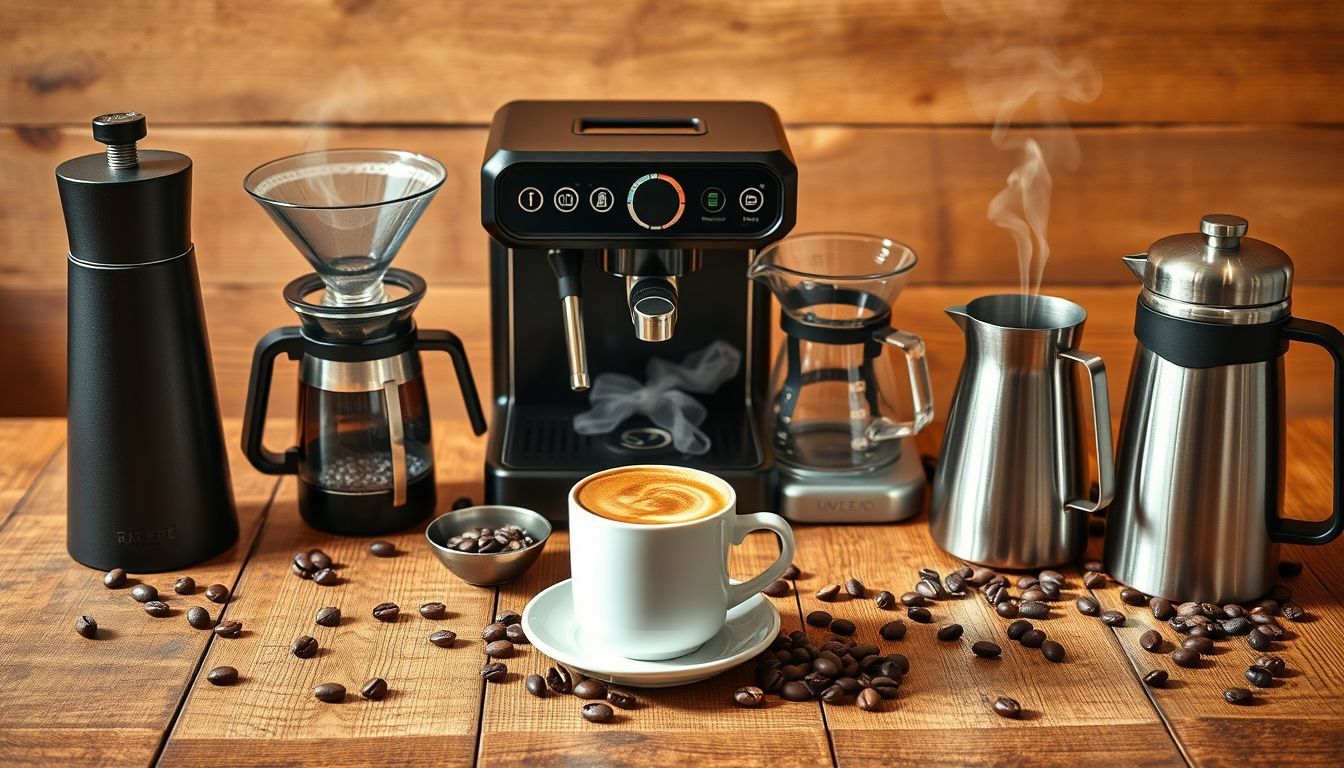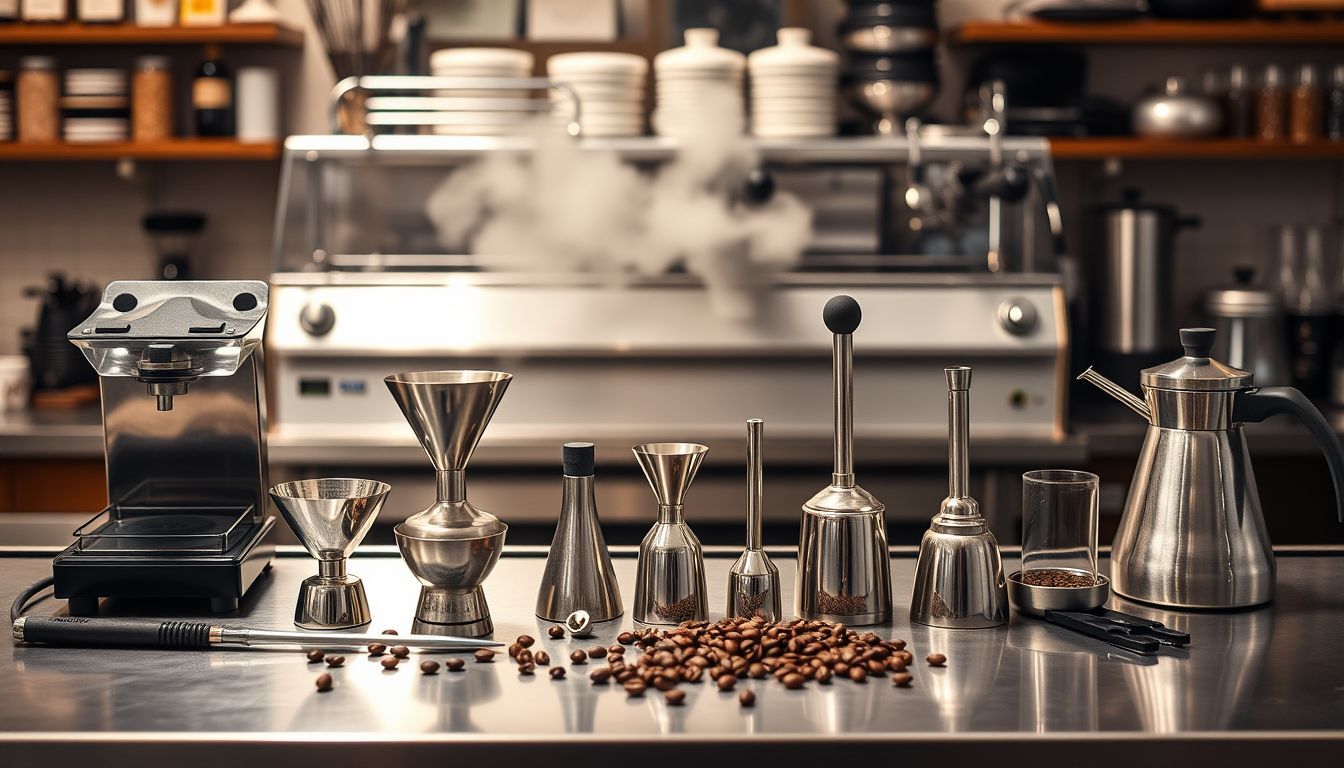Why Your Coffee Tastes Bad (And How to Fix It with Better Gear)
Bad coffee isn't a character flaw—it's usually an equipment problem. Here's how to diagnose what's ruining your brew and which gear upgrades actually fix the issues.

Why Your Coffee Tastes Bad (And How to Fix It with Better Gear)
Let me guess: you've been telling yourself that you're "just not a coffee person" while secretly wondering why your home-brewed coffee tastes like it was filtered through a gym sock, while that $5 cup from the local café makes you question your life choices. You've probably blamed your technique, your beans, maybe even your water—everything except the most likely culprit sitting innocently on your counter.
Your equipment is sabotaging you.
As someone who's spent over a decade analyzing coffee gear and watching people struggle with subpar equipment, I can tell you that 80% of bad coffee problems stem from gear that's either fundamentally flawed, poorly maintained, or completely wrong for the job. The coffee industry has done an excellent job convincing consumers that technique and beans are everything, while quietly selling them equipment that makes good coffee nearly impossible.
Here's the uncomfortable truth: you can have perfect technique, premium beans, and ideal water, but if your grinder produces particle sizes ranging from powder to pebbles, or your brewing device can't maintain proper temperature, you're fighting a losing battle. It's like trying to paint the Mona Lisa with a house brush—the tool fundamentally limits what's possible.
But here's the good news: most coffee problems have specific, identifiable causes with clear equipment solutions. Bad coffee isn't a mystery—it's a diagnosis waiting to happen.
The Anatomy of Bad Coffee: Identifying Your Enemy
The Five Flavors of Failure
Bad coffee doesn't just taste "bad"—it fails in specific, identifiable ways. Understanding these failure modes is the first step to fixing them.
Bitter Coffee: Over-extraction caused by too much contact time, too fine a grind, or too hot water. Tastes harsh, astringent, and leaves an unpleasant aftertaste.
Sour Coffee: Under-extraction from too little contact time, too coarse a grind, or too cool water. Tastes sharp, acidic, and thin.
Weak Coffee: Insufficient coffee-to-water ratio or poor extraction efficiency. Tastes watery and lacks body.
Muddy Coffee: Poor filtration or inconsistent grind size. Tastes gritty and lacks clarity.
Stale Coffee: Old beans, poor storage, or contaminated equipment. Tastes flat, cardboard-like, or rancid.
The Equipment Culprits
Each flavor failure typically points to specific equipment problems:
Grinder Issues: Inconsistent particle size, heat generation, static
Brewing Device Problems: Poor temperature control, uneven water distribution, inadequate filtration
Scale/Measurement Failures: Inconsistent ratios, timing problems
Storage Problems: Stale beans, contaminated containers
Water Quality Issues: Mineral content, filtration problems
The Grinder: Your Coffee's Make-or-Break Moment
Why Your Blade Grinder Is Ruining Everything
If you're using a blade grinder, we've found your problem. Blade grinders don't grind coffee—they assault it with spinning metal until some pieces are small enough to fall through. The result is a chaotic mix of powder, properly sized particles, and chunks that would make a French press weep.
The Blade Grinder Problems:
- Particle size ranges from dust to pebbles
- Heat generation damages flavor compounds
- Static electricity creates mess and inconsistency
- No control over grind size
- Inconsistent results every time
The Coffee Impact: Simultaneous over-extraction (from the powder) and under-extraction (from the chunks), creating bitter, sour, muddy coffee that tastes different every day.
The Burr Grinder Solution
Burr grinders crush coffee between two surfaces, creating uniform particle sizes that extract evenly. This isn't just an upgrade—it's the difference between chaos and control.
Entry Level Champion: Baratza Encore ($140)
- Consistent particle size distribution
- 40 grind settings
- Replaceable burrs
- Minimal heat generation
- Transforms coffee quality immediately
Mid-Range Marvel: Baratza Virtuoso+ ($250)
- Faster grinding with less retention
- Digital timer for consistency
- Better burr set for improved uniformity
- Quieter operation
The Performance Impact: Upgrading from blade to burr typically improves extraction consistency by 300-400%, eliminating the bitter-sour confusion that plagues blade grinder users.
Manual Grinder Alternatives
For budget-conscious coffee lovers, manual grinders offer burr quality at lower prices:
Timemore C2 ($60): Excellent consistency, portable, great value
1Zpresso JX ($160): Professional-level performance, faster grinding
Comandante C40 ($250): Precision engineering, exceptional uniformity
Brewing Equipment: Where Good Coffee Goes to Die
The Automatic Drip Machine Disaster
Most automatic drip machines are coffee torture devices disguised as convenience appliances. They fail at almost every aspect of proper brewing:
Temperature Problems: Brew at 180-185°F instead of optimal 195-205°F
Contact Time Issues: Rush water through coffee too quickly
Water Distribution Failures: Single-point injection creates channeling
Heat Plate Horrors: Continuously cook coffee, creating bitter compounds
The Result: Weak, bitter, or sour coffee that gets worse as it sits on the heat plate.
The SCA-Certified Solution
The Specialty Coffee Association certifies machines that actually follow brewing principles:
Bonavita Connoisseur ($150):
- Proper brewing temperature (195-205°F)
- Pre-infusion for even saturation
- Optimal contact time
- Even water distribution
- No heat plate to ruin coffee
Technivorm Moccamaster ($320):
- Precise temperature control
- Copper heating element
- Optimal extraction time
- Handmade quality
- 5-year warranty
Performance Difference: SCA-certified machines typically improve coffee quality by 200-300% over basic drip makers while requiring zero technique.
Pour-Over Precision
For those willing to invest time in technique, pour-over methods offer ultimate control:
Hario V60 ($12-25):
- Complete control over variables
- Excellent extraction when mastered
- Requires gooseneck kettle and technique
- Unforgiving of poor execution
Chemex ($45-55):
- Thick filters for clean cups
- Beautiful design
- Forgiving brewing method
- Excellent for multiple cups
The Trade-off: Manual methods require skill development but offer the highest ceiling for coffee quality.
The Scale: Your Secret Weapon Against Inconsistency
Why Scoops Are Sabotage
Using scoops or measuring cups for coffee is like using a ruler to measure temperature—fundamentally wrong tool for the job. Coffee density varies dramatically based on roast level, grind size, and bean origin.
The Scoop Problems:
- Density variations create 30-50% ratio inconsistency
- No timing capability
- Encourages guesswork over precision
- Makes recipe replication impossible
The Digital Scale Solution
A quality scale transforms coffee from guesswork to precision:
Hario V60 Drip Scale ($45):
- 0.1g precision
- Built-in timer
- Water-resistant design
- Perfect size for coffee brewing
Acaia Pearl ($140):
- Professional-grade accuracy
- App connectivity
- Flow rate monitoring
- Barista competition standard
The Impact: Consistent ratios eliminate the biggest variable in home brewing, improving consistency by 400-500%.
Water: The 98% Factor Everyone Ignores
Why Your Tap Water Is Ruining Everything
Coffee is 98% water, yet most people pay more attention to their coffee beans than their water quality. Tap water varies dramatically in mineral content, chlorine levels, and pH—all factors that significantly impact extraction and flavor.
Common Water Problems:
- Chlorine creates medicinal off-flavors
- Hard water over-extracts and creates bitter coffee
- Soft water under-extracts and creates sour coffee
- Poor filtration allows contaminants through
The Filtration Fix
Basic Carbon Filter ($15-25):
- Removes chlorine and basic contaminants
- Improves taste immediately
- Easy installation and maintenance
- Dramatic improvement for minimal cost
Peak Water Pitcher ($60):
- Optimizes mineral content for coffee
- Removes chlorine and contaminants
- Adds beneficial minerals
- Designed specifically for coffee brewing
Third Wave Water ($20/month):
- Mineral packets for distilled water
- Precise mineral control
- Consistent results anywhere
- Professional-level water optimization
Storage: Where Good Coffee Goes Stale
The Pantry Problem
Most people store coffee like it's rice—in whatever container is handy, wherever there's space. Coffee beans are flavor time bombs that start degrading immediately after roasting.
Storage Enemies:
- Oxygen (causes oxidation and staling)
- Light (accelerates degradation)
- Heat (speeds up chemical reactions)
- Moisture (creates mold and off-flavors)
The Freshness Solution
Airscape Canister ($30-45):
- Vacuum seal removes oxygen
- Opaque construction blocks light
- Durable stainless steel
- Extends freshness 2-3x
Fellow Atmos ($35-50):
- Integrated vacuum pump
- Sleek design
- Easy operation
- Excellent seal integrity
The Impact: Proper storage extends peak flavor from 7-10 days to 14-21 days, effectively doubling your coffee investment.
The Espresso Equipment Minefield
Why Cheap Espresso Machines Fail
Espresso is the most equipment-dependent coffee method, requiring precise pressure, temperature, and timing. Cheap espresso machines fail at all three:
Pressure Problems: Use 3-5 bars instead of required 9 bars
Temperature Issues: Inconsistent heating and poor thermal stability
Build Quality: Plastic components that fail quickly
Grinder Integration: Terrible built-in grinders that ruin everything
The Entry-Level Espresso Solution
Gaggia Classic Pro ($450):
- Commercial-grade components
- Proper 9-bar pressure
- Manual steam wand for learning
- Upgradeable and repairable
- 30+ year proven design
Grinder Pairing: Baratza Sette 270 ($350):
- Purpose-built for espresso
- Excellent consistency
- Minimal retention
- Easy adjustment
Total Investment: $800 for legitimate espresso capability vs. $200-300 for machines that can't make real espresso.
The Upgrade Priority Matrix
Maximum Impact Upgrades (Do These First)
1. Replace Blade Grinder with Burr Grinder
- Impact: 400% improvement in consistency
- Cost: $60-250
- Difficulty: Plug and play
2. Add Digital Scale
- Impact: 300% improvement in consistency
- Cost: $25-50
- Difficulty: Immediate
3. Improve Water Quality
- Impact: 200% improvement in clarity
- Cost: $15-60
- Difficulty: Simple installation
High Impact Upgrades (Do These Second)
4. Upgrade Brewing Method
- Impact: 200-300% improvement in quality
- Cost: $12-320
- Difficulty: Technique required
5. Better Storage
- Impact: 100% improvement in freshness
- Cost: $30-50
- Difficulty: Immediate
Nice-to-Have Upgrades (Do These Last)
6. Premium Accessories
- Impact: 50-100% improvement
- Cost: $50-200
- Difficulty: Varies
The Budget Reality Check
The $200 Coffee Transformation
Essential Upgrades:
- Baratza Encore: $140
- Digital scale: $30
- Water filter: $20
- Basic storage: $30
Total: $220 for equipment that transforms coffee quality
The $500 Complete Setup
Premium Upgrades:
- Baratza Virtuoso+: $250
- Bonavita Connoisseur: $150
- Hario scale: $45
- Airscape canister: $35
- Water filtration: $60
Total: $540 for café-quality home brewing
The ROI Analysis
Quality equipment pays for itself:
- Café savings: $4-6 per day × 250 days = $1,000-1,500 annually
- Equipment cost: $200-500 one-time investment
- Payback period: 2-6 months
- Ongoing savings: $500-1,000 annually
Troubleshooting Guide: Symptoms and Solutions
"My coffee is always bitter"
Likely Causes: Over-extraction from too fine grind, too hot water, or too long contact time Equipment Solutions: Better grinder for consistency, temperature-controlled brewing device, timer for precision"My coffee is always sour"
Likely Causes: Under-extraction from too coarse grind, too cool water, or too short contact time Equipment Solutions: Grinder with finer settings, proper brewing temperature, longer extraction method"My coffee tastes different every day"
Likely Causes: Inconsistent ratios, grind size variation, or technique Equipment Solutions: Digital scale, burr grinder, consistent brewing method"My coffee tastes weak"
Likely Causes: Poor extraction efficiency or wrong ratios Equipment Solutions: Better grinder, proper brewing device, accurate scale"My coffee tastes stale"
Likely Causes: Old beans, poor storage, or contaminated equipment Equipment Solutions: Proper storage containers, regular cleaning, fresher beansThe Maintenance Factor
Why Clean Equipment Matters
Coffee oils turn rancid, mineral deposits affect flow rates, and bacteria love warm, moist environments. Dirty equipment ruins even the best beans.
Cleaning Essentials:
- Cafiza for removing coffee oils
- Dezcal for mineral deposits
- Grinder cleaning tablets
- Microfiber cloths
- Regular cleaning schedule
The Performance Impact
Clean equipment:
- Improves flavor clarity by 200-300%
- Extends equipment life by 50-100%
- Prevents off-flavors and contamination
- Maintains optimal performance
Conclusion: Your Coffee Intervention Starts Now
Bad coffee isn't a personality trait—it's a solvable problem with specific equipment solutions. Every coffee failure mode has an identifiable cause and a clear fix. The question isn't whether better equipment will improve your coffee (it will), but which upgrades will give you the biggest improvement for your investment.
Start with the fundamentals: a burr grinder, a digital scale, and better water. These three upgrades alone will transform your coffee more dramatically than any technique refinement or bean upgrade. They address the root causes of inconsistency, poor extraction, and off-flavors that plague most home brewing.
Remember, you're not trying to recreate a café experience—you're trying to make consistently good coffee that you actually want to drink. The equipment recommendations in this guide aren't about impressing coffee snobs or winning brewing competitions. They're about solving the specific problems that make your coffee taste bad.
Stop blaming yourself for bad coffee when the real culprit is sitting on your counter. Invest in equipment that works with you, not against you. Your morning routine—and your taste buds—will thank you for finally giving them the tools they need to succeed.
Because life's too short for bad coffee, especially when good coffee is just a few smart equipment choices away.

Sofia Rossi
I started my career in a world of spreadsheets and boardrooms, but I quickly realized the most interesting data was in the way people interacted when the pressure was on. My novels are my way of analyzing the human heart—the messy, complicated, and often hilarious parts. I write about the lives we lead now, with all the love, ambition, and absurdity that comes with it.


